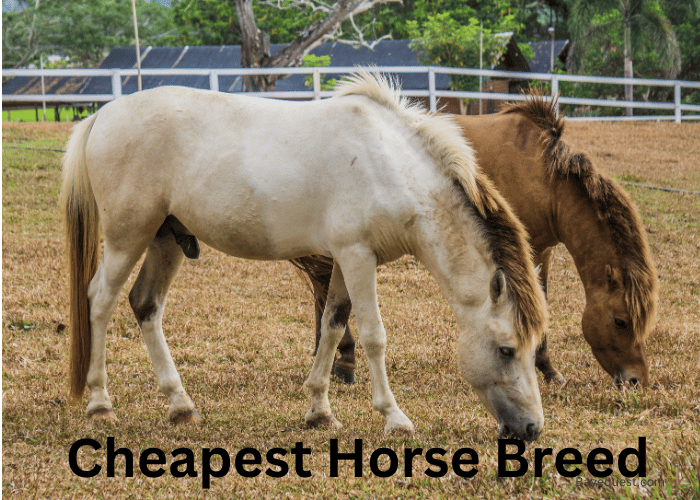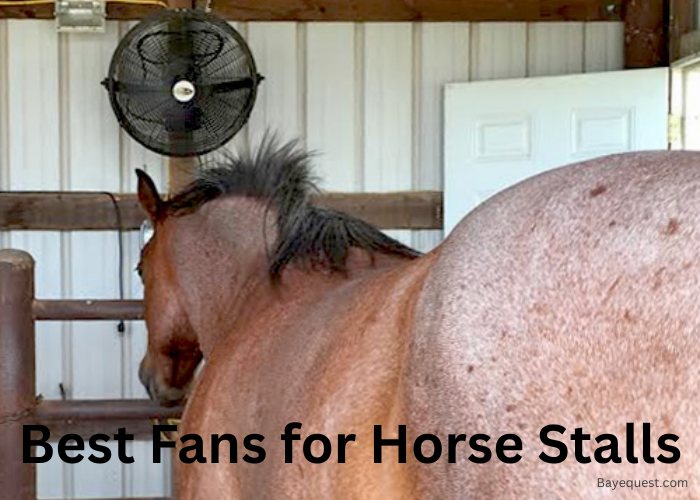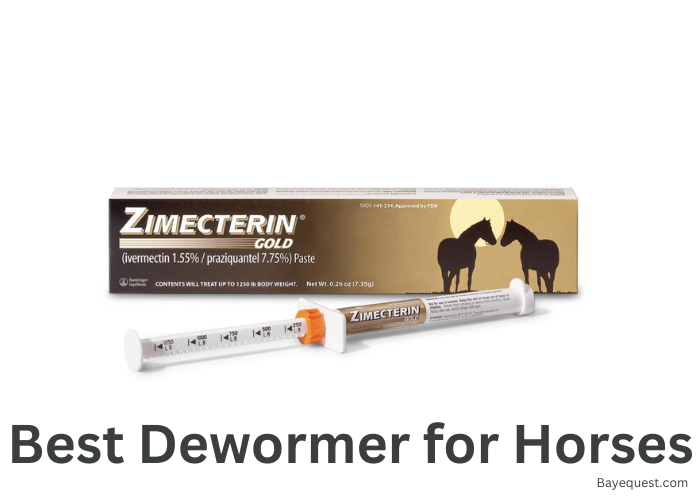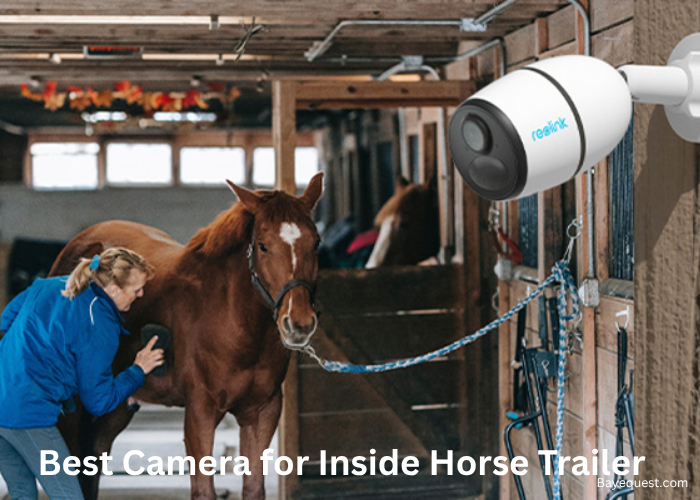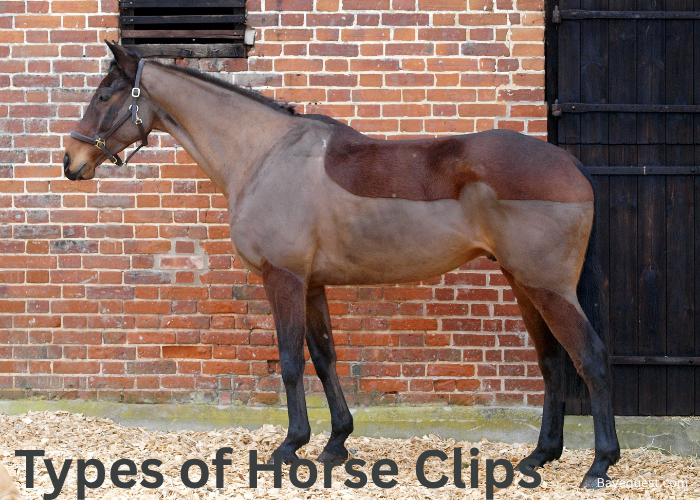Owning a horse doesn’t need to break the bank. Some breeds are costly, but others are affordable and amazing.
Whether you want a trail companion or a show partner, there’s a breed for your budget. This blog highlights horse breeds that offer great value.
Get ready to meet horses that are charming, capable, and easy on your wallet.
Cheapest Horse Breed: Key Takeaway
- Mustang
- Appaloosa
- Paint Horse
- Arabian
- Quarter
- Tennessee walker
- Romani vanners
- Rescues
- Standardbred
- Miniature Horse
- Thoroughbred
- Crossbred
- Grade
- Clydesdale
What is the Cheapest Horse Breed?
The cheapest horse breed is often considered to be the Mustang. Mustangs are wild horses that can be adopted through government programs.
Their adoption fees range between $125 and $200. Their affordability comes from their large population and the government’s efforts to manage and rehome them.
Despite their low cost, Mustangs are hardy, intelligent, and versatile. This makes them an excellent choice for budget-conscious horse owners.
Related read: Most Expensive Horse Breeds.
14 Cheapest Horse Breeds in the World
This section look at the 14 cheapest horse breeds in the world today.
#1 Mustang ($125 to $200)
Mustangs are among the most affordable horses you can own. Adoption fees through the Bureau of Land Management (BLM) usually range from $125 to $200.
Monthly maintenance costs are relatively low, around $200 to $300, depending on location and care requirements.
Mustangs are hardy, medium-sized horses, often standing between 14 to 16 hands high. They have a wild heritage, which makes them resilient and low-maintenance.
Their affordability comes from their abundance and the government programs that manage their populations. Despite their low cost, Mustangs are strong and intelligent animals.
Interesting read: Mustang Horse Breed Lifespan.
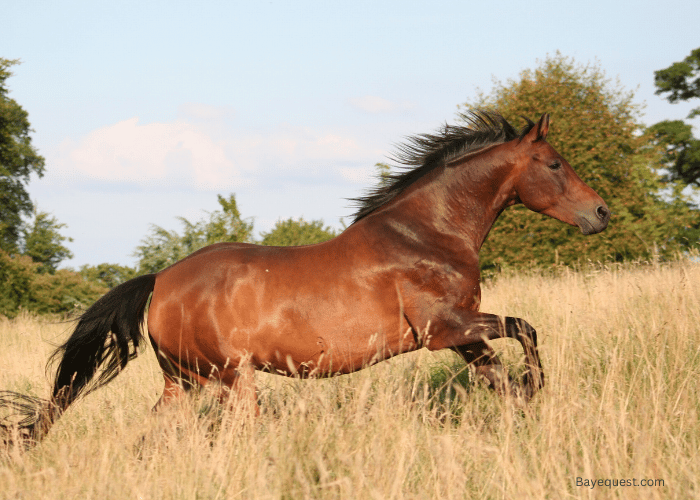
#2 Appaloosa ($850 and $4,500)
Appaloosas have distinctive spotted coats and are quite affordable compared to other breeds. Purchasing an Appaloosa costs between $850 and $4,500.
Monthly maintenance, including feed, farrier, and basic care, usually runs between $250 and $400.
They are medium-sized horses, often standing around 14.2 to 16 hands high. They are also versatile and do well in various riding disciplines.
Appaloosas are affordable due to their widespread availability. Their hardy nature makes them less prone to costly health issues, keeping long-term ownership costs low.
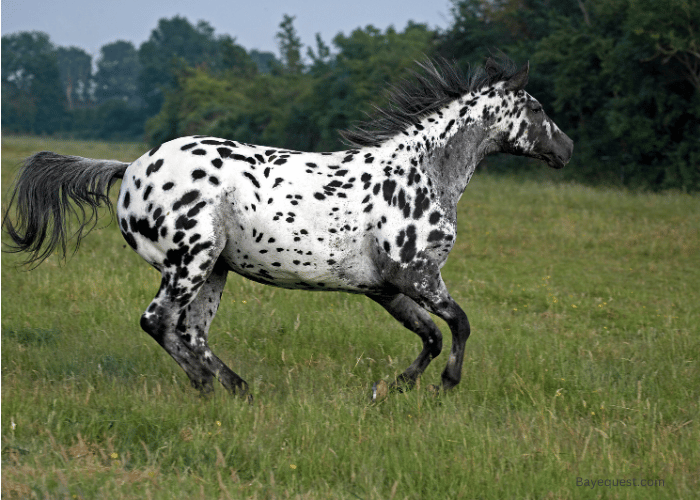
#3 Paint Horse ($1,000 and $5,000)
Paint Horses, known for their striking coat patterns, are generally affordable and versatile.
Purchasing a Paint Horse costs between $1,000 and $5,000, depending on age and training. Monthly maintenance costs range from $250 to $400, covering feed, farrier visits, and routine care.
Paint Horses are usually between 14.2 and 16 hands high, with strong, muscular builds. Their affordability is due to their popularity and wide availability, especially in North America.
Read also: What is the Most Popular Horse Breed in the World?
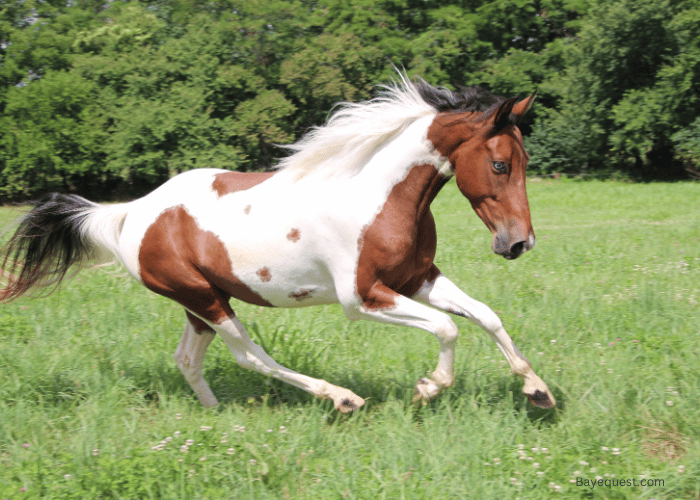
#4 Arabian ($5,000 and $20,000)
Arabians are elegant and known for their endurance, but they can also be affordable.
Purchasing Arabian costs between $5,000 and $20,000, though high-quality breeding stock can be more expensive.
Monthly maintenance costs are around $300 to $450, including feed, farrier services, and basic care.
Arabians are usually 14.1 to 15.1 hands high, with a distinctive head shape and high tail carriage.
Their affordability in the lower price range is due to their popularity and the large number available on the market.
Despite their affordability, Arabians are prized for their intelligence, stamina, and beauty.
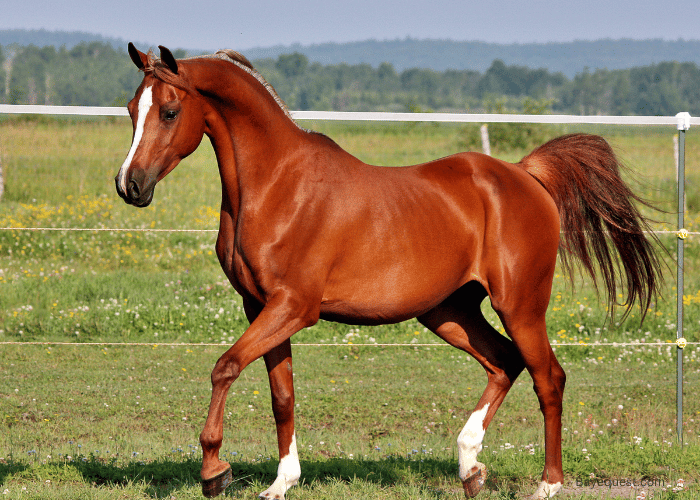
#5 Quarter ($3,000 and $10,000)
Quarter Horses are one of the most popular and affordable breeds in the United States.
Purchasing a Quarter Horse usually costs between $3,000 and $10,000. Monthly maintenance costs are generally between $250 and $400, depending on the region and care level.
Quarter Horses are known for their muscular build and stand between 14.3 and 16 hands high. Their affordability comes from their wide availability and versatility.
Quarter Horses are easy to maintain, making them a budget-friendly option for both novice and experienced riders.
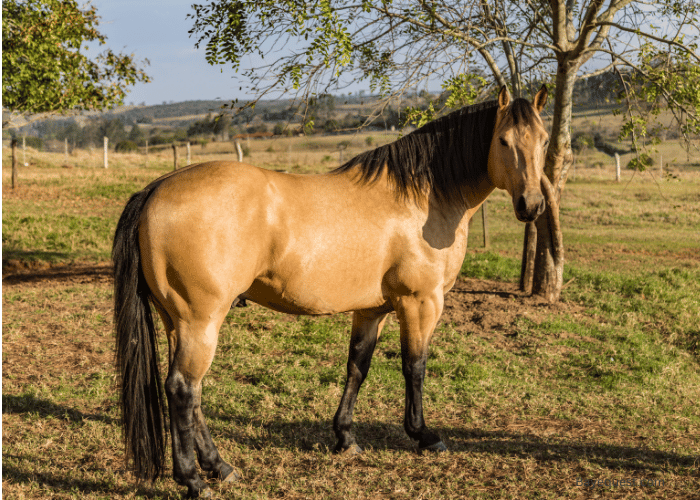
#6 Paso Fino ($3,000 and $5,000)
Paso Finos are renowned for their smooth, natural gait, making them a comfortable ride.
Purchasing a Paso Fino costs between $3,000 and $5,000, though some well-trained or show-quality horses can be higher.
Monthly maintenance costs are usually between $300 and $450, which includes feed, farrier services, and routine care.
Paso Finos are smaller horses, standing between 13.2 and 15.2 hands high, and are known for their agility and grace.
Their affordability is due to their relative popularity in certain regions and their suitability for a range of riders.
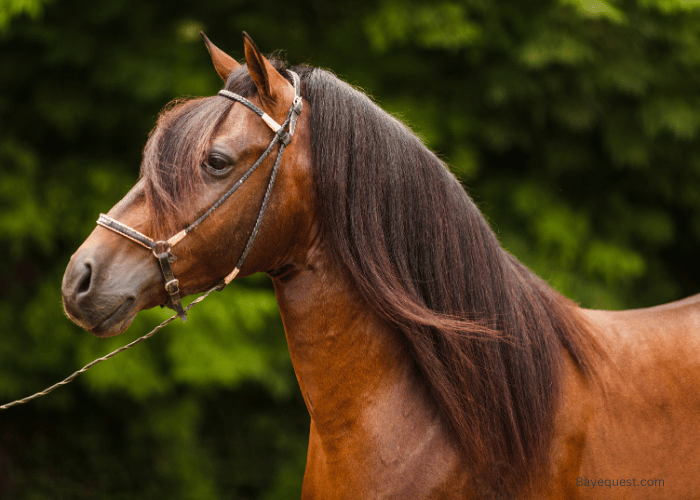
#7 Romani vanners ($10,000 to $25,000)
Gypsy Vanners, also known as Romani Vanners, are visually stunning horses with their long, flowing manes and feathered legs.
They are more expensive to purchase, with prices ranging from $10,000 to $25,000, depending on age, training, and pedigree.
Monthly maintenance costs are higher, around $400 to $600, due to their grooming needs and dietary requirements.
Gypsy Vanners are medium-sized horses, standing between 14 and 16 hands high. Their price is higher due to their rarity and the demand for their unique appearance.
However, they are calm and versatile, making them a prized possession for those who can afford the upfront cost.
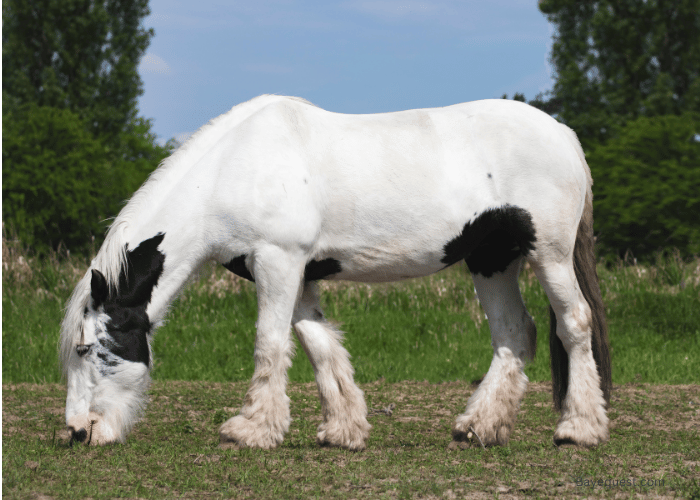
#8 Rescues ($100 to $1,000)
Rescue horses is an incredibly affordable option for those looking to own a horse.
Adoption fees often range from $100 to $1,000, depending on the rescue organization and the horse’s condition. Monthly maintenance costs are similar to other breeds, between $250 and $400.
Rescue horses come in all breeds, sizes, and ages, so their physical characteristics vary widely.
The affordability of rescue horses comes from the mission of rescue organizations to rehome horses in need.
Owning a rescue horse can be a rewarding experience, both emotionally and financially, as you provide a second chance for a horse in need.
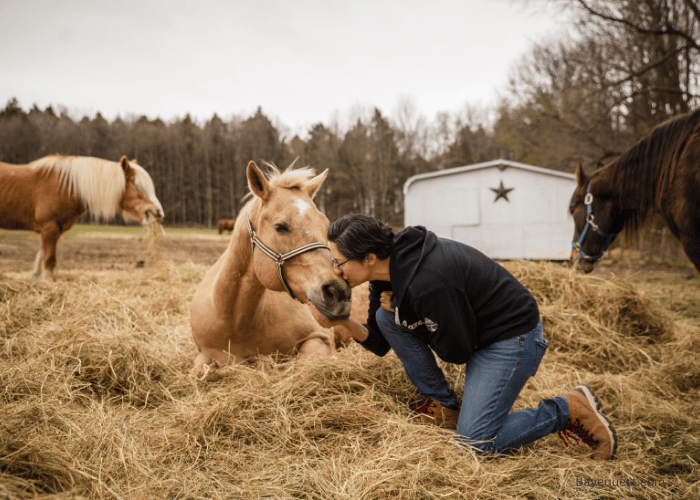
#9 Standardbred ($1,000 and $10,000)
Standardbreds, commonly used in harness racing, are often available at affordable prices, especially for retired racers.
Purchasing a Standardbred costs between $1,000 and $10,000. Monthly maintenance costs usually range from $250 to $400, covering feed, farrier, and basic care.
Standardbreds are medium to large horses, standing between 14 and 17 hands high, with a sturdy and athletic build.
Their affordability is largely due to the high number of Standardbreds retired from racing each year.
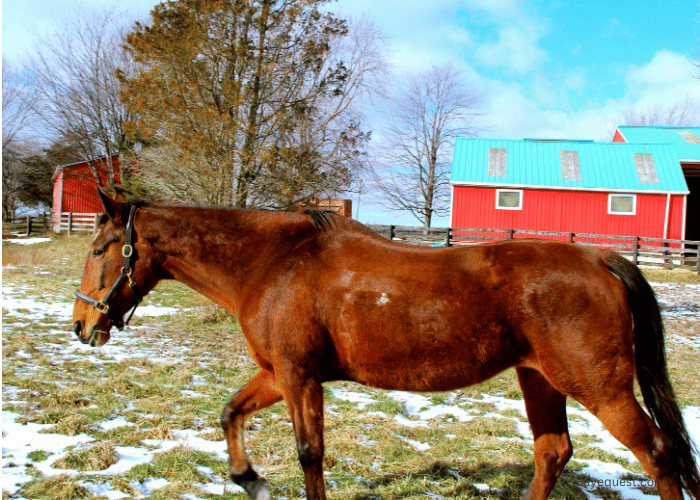
#10 Miniature Horse
Tiny in size but big in personality, Miniature Horses are a budget-friendly option if you want the joy of horse ownership without the hefty price tag.
Purchasing a Miniature Horse costs between $2,000 and $3,000, making them accessible to many first-time horse owners. Their small stature means lower monthly maintenance costs, usually around $150 to $300.
They require less food, and their care needs are more manageable compared to full-sized horses.
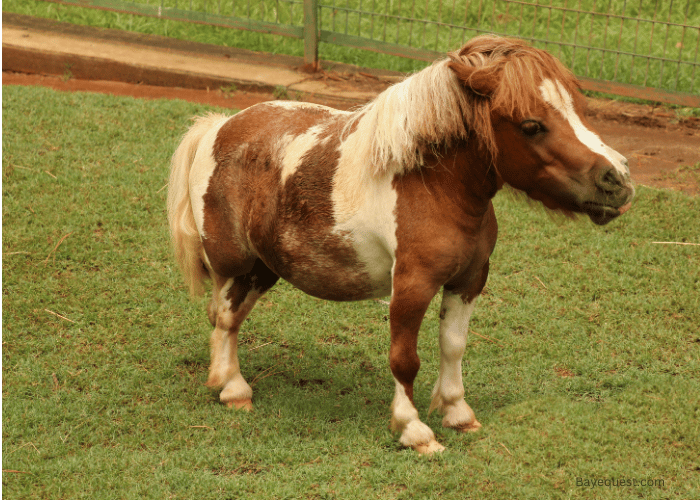
#11 Icelandic Horse
Icelandic Horses are known for their strength and unique gaits, the tölt and flying pace.
Despite their exotic origin, they can be a bit priced, ranging from $3,500 to $7,000. Monthly maintenance costs hover around $300 to $450, which is on par with other medium-sized breeds.
Icelandics are small but sturdy, usually standing between 13 and 14 hands high. They are well-suited to harsh climates, which makes them hardy and low-maintenance.
Their affordability comes from their practical use in Iceland. They are also suitable for a variety of riders, from beginners to experienced equestrians.
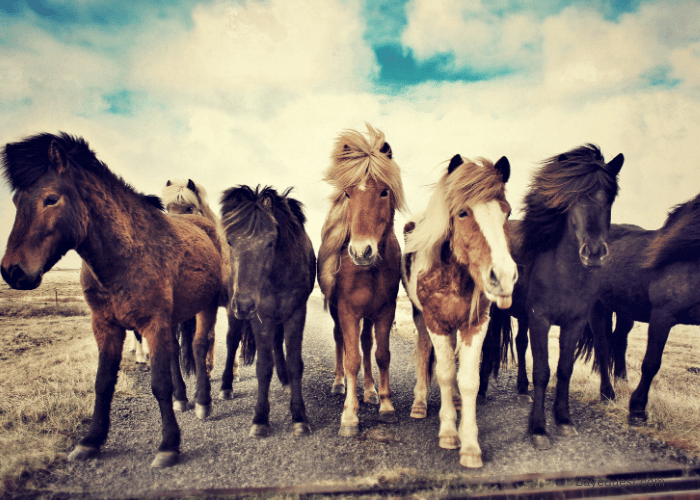
#12 Crossbred
Crossbred horses offer a unique blend of characteristics from two or more breeds. This often results in an affordable and versatile companion.
Prices for crossbred horses can vary, but they range from $1,000 to $4,000, depending on the specific mix and the horse’s training. Monthly maintenance costs are similar to those of purebred horses, generally around $250 to $400.
Crossbreds can range in size and build, depending on their parentage. However, they often inherit the best traits of both breeds, making them well-rounded in temperament and ability.
Their affordability is due to their mixed heritage, which often doesn’t command the premium prices of purebreds.
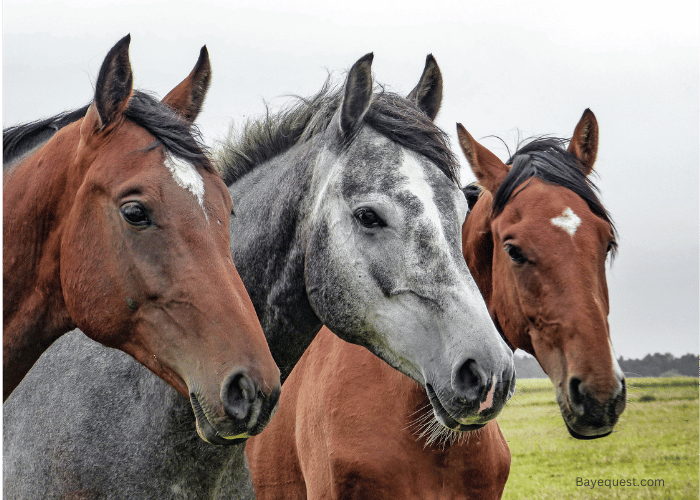
#13 Grade
Grade horses are those with unknown or unregistered lineage, which makes them more affordable.
A grade horse costs between $800 and $3,000, depending on age, training, and condition. Monthly maintenance costs are around $250 to $400.
Grade horses come in all shapes and sizes, and while their background may be a mystery, many are highly capable and versatile.
Their affordability is due to their unregistered status, but this doesn’t detract from their potential as great riding companions.
Grade horses are often a hidden gem if you are a budget-conscious buyer.
#14 Clydesdale
Clydesdales are iconic for their towering height and powerful build, often recognized as the gentle giants of the horse world. Purchasing Clydesdale costs between $2,500 and $5,000.
Monthly maintenance costs range from $400 to $600, reflecting their larger size and higher food intake. Clydesdales stand between 16 and 18 hands high, with broad chests, feathered legs, and a calm, docile nature.
Their affordability, despite their impressive stature, is due to their versatility and availability.
While they require more feed and care, Clydesdales are beloved for their gentle demeanor and striking appearance.
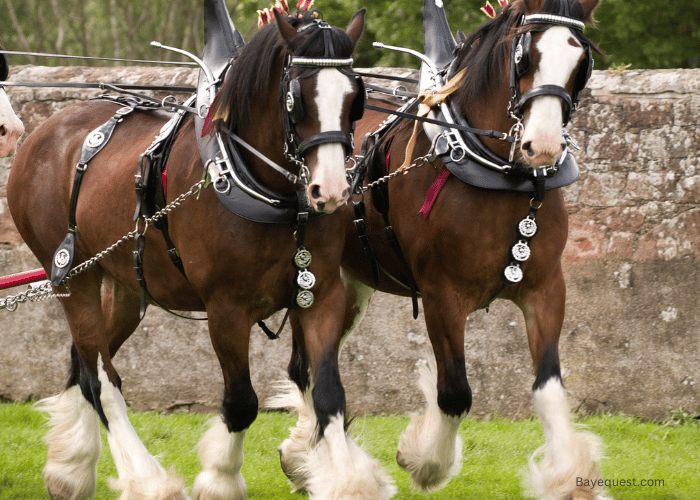
Factors Affecting Horse Prices
Here are the key factors affecting horse prices:
Breed and pedigree. Horses with prestigious bloodlines or specific breed qualities are more expensive due to their desirable traits and potential for performance in shows or competitions.
Age. Younger horses, especially those in prime training years, are often more expensive. Very young or very old horses may be cheaper, depending on their future potential or limitations.
Training and experience. Horses that are well-trained or have experience in specific disciplines (e.g., dressage, jumping) usually command higher prices due to their readiness for competition or work.
Health and conformation. Horses in excellent health with good conformation are valued higher because they are more likely to perform well and have fewer medical issues.
Location. Prices vary by region due to factors like demand, availability, and local cost of living. In areas where horses are common, prices may be lower due to higher supply.
Market demand. The popularity of certain breeds or types of horses at any given time can drive up prices. Trends in equestrian sports or recreational riding can influence demand.
Purpose or use. Horses bred and trained for specialized purposes are often more expensive than general-purpose or pleasure horses.
Registration and papers. Horses with official registration and pedigree papers have higher value due to the traceability of their lineage and potential for breeding.
Temperament. Horses with a calm, easygoing temperament, especially those suitable for beginners, often fetch higher prices because they are easier to handle and train.
Supply and availability. Limited availability of certain breeds or types in a particular area can increase prices, while a surplus can drive prices down.
Interesting read: How Much Does it Cost to Own a Horse Monthly?
Considerations When Buying a Low-Cost Horse
When buying a low-cost horse, several important considerations can help ensure you make a wise investment. These include:
1. Health and vet check. Always have a veterinarian conduct a thorough pre-purchase exam. Even if the horse is inexpensive, unexpected medical problems can lead to high costs later.
2. Training level. Assess the horse’s training and experience. A low-cost horse might be untrained or have behavior issues, requiring additional time, effort, or money.
3. Age and future potential. Consider the horse’s age and its implications. Older horses might have limited years of active use left, while very young horses may require significant training. Balance the horse’s current condition with its long-term potential.
4. Compatibility with your goals. Ensure the horse matches your riding goals, whether it’s for pleasure riding, competition, or companionship. A low-cost horse might not be suitable for specific disciplines or intensive use.
5. Maintenance costs. Even if the purchase price is low, remember that the ongoing costs of care. Budget for these expenses to avoid surprises.
6. Temperament and behavior. Evaluate the horse’s temperament to ensure it aligns with your skill level. Some low-cost horses may be difficult to handle. Choose a horse that matches your confidence and experience.
7. Previous use and background. Understand the horse’s history. Horses with a history of neglect, abuse, or heavy work may have physical or behavioral issues that could be costly or time-consuming to address.
8. Trial period. If possible, negotiate a trial period to see how the horse adapts to your care and riding style. This can help you assess any potential issues before finalizing the purchase.
9. Rescue horses. If considering a rescue horse, be prepared for the possibility of rehabilitation. While rescue horses can be incredibly rewarding to own, they may come with unknown challenges.
10. Insurance. Consider whether insuring the horse is worthwhile. Even low-cost horses can benefit from coverage that protects against unexpected veterinary expenses or loss.
Cheapest Horse Breed: Conclusion
Finding an affordable horse doesn’t mean sacrificing quality. The cheapest horse breeds offer a perfect mix of charm, versatility, and value.
Whether you’re looking for a trusty trail companion, a showstopper, or a family friend, there’s a budget-friendly option out there for you. Remember, the joy of horse ownership isn’t about the price tag—it’s about the bond you build.
So saddle up, save some cash, and enjoy the ride with a horse that’s as easy on your wallet as it is on your heart.




